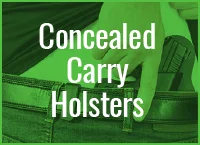
Resources

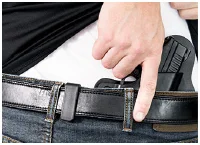

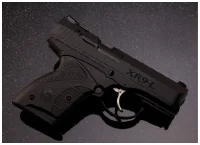
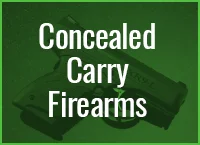
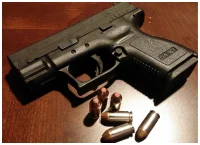
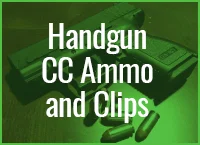
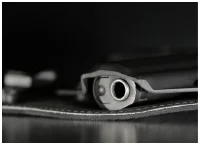
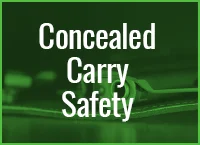
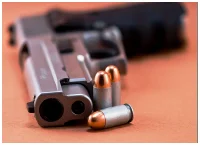
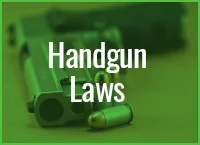
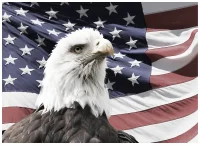

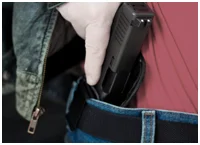
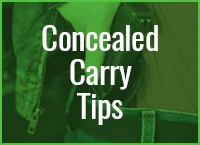
Concealed Carry Tips
Taking those steps to obtaining a concealed carry permit is an important one. As a person who can legally carry a concealed weapon, there are a lot of changes required to maintain one's own personal safety and most importantly – be accountable. Because that's what CCW means – an informed decision to arm and be able to defend one's self. In that spirit, we'll go over some small adjustments and thinking strategies to make this process what it should be: fun, rewarding, and empowering

Taking those steps to obtaining a concealed carry permit is an important one. As a person who can legally carry a concealed weapon, there are a lot of changes required to maintain one's own personal safety and most importantly – be accountable. Because that's what CCW means – an informed decision to arm and be able to defend one's self. In that spirit, we'll go over some small adjustments and thinking strategies to make this process what it should be: fun, rewarding, and empowering
Concealed Carry Permit Information
Taking those steps to obtaining a concealed carry permit is an important one. Here are a few resources that can help you navigate some of the complexities in obtaining a concealed carry permit
Should you get a Concealed Carry Permit?
Concealed Carry Permit Information By State
Do I need to take a concealed carry class?
Reasons your concealed weapons permit got rejected
Keep your ccw permit on you at all times
Bathroom Use with a CCW
Everyone's gotta go sometime. And when packing a concealed carry weapon, this may cause an issue if you're unsure of what to do. First off – having a concealed carry handgun in a public restroom isn't a big deal. Keeping it accessible and being accountable at all times is. With a great inside the waistband concealed carry holster, keeping a pistol accessible and secure is pretty simple. Hanging it up on the coat hang peg or placing it atop the porcelain reservoir tank is not a good idea. If that pistol is going to be anywhere, it's generally a good idea to rest it in the basket of one's trousers – free from prying hands and problems.
Concealed Carrying and Dating
Part of wearing a concealed carry handgun is it's your business. Who you tell – outside of legally authorized members of law enforcement – is your business. But how does that translate to the world of romance? Should your partner know if you have a concealed carry weapon on your person? This comes down to manners and personal discretion. What's concealed on your waistband is your business. But generally, if someone who's going out on a date with you is informed of this, she may appreciate the candor. And especially for those ladies out there going out for the first time with a guy – having a concealed carry weapon is communicating that you have the means to protect yourself.
When Is A Good Time To Tell A Date You Carry A Concealed Handgun?
Concealed Carrying and Alcohol
This one's an easy one – it's always a 'no'. Part of the responsibility of carrying a concealed firearm is understanding that drinking and carrying don't mix. More importantly – depending on which state you're in – your handgun has to be locked up and inaccessible while you're drinking. Glove boxes don't always count. If there's a cold mug of draught on the line, sometimes it's best to just call it a night and throw the handgun and concealed carry holster right in the safe. More importantly, your CCW permit depends upon it.
Alcohol and concealed carry - Important considerations to take into account
Concealed Carry at Work
And you say your job is tough? While having the ability to conceal carry ought be a right upheld in the workplace and out of it, some jobs have an increased risk of being the victim of violence. As such, it would only make sense that these people should have the ability to conceal a firearm on his or her person, right?
If you enjoy working with weapons then these are the jobs for you. Each career that deals with firearms has their own particular arena but virtually all of them require that employees maintain an intimate working knowledge of weapons.
Professions that should allow employees to concealed carry
The biggest concern with carrying concealed in a business suit or dress suit is the problem of showing an outline of your weapon. Check out this article to learn how to be able to conceal the weapon properly in business attire.
CCW and Motorcycles
There's nothing better than celebrating the first warm days of spring with a ride through the countryside. Whether you're a long-time rider or simply a weekend enthusiast, there's a few good tips to remember when packing a concealed carry handgun.
How to Conceal Carry a Gun While Riding a Bicycle
Commuting on a bicycle can be dangerous at times and leave the cyclist exposed. When biking to work or biking for leisure it might be a good idea to learn how to properly carry a concealed weapon. It's better to have it and not need it, then to need it and not have it.
CCW Camping Advice
As of February 22, 2010, people can carry concealed weapons in U.S. national parks. There might be a wild animal or if lost, a weapon could become a useful tool. It is always a good idea to bring a weapon with you camping.
Dressing for Concealed Carry
Clothing can have a large impact on effectively conceal carrying. Printing is a large worry of concealed carriers because it defeats the whole purpose of being concealed. Dressing appropriately can help you blend in and keep your pistol hidden.
Concealed Carry - Winter VS. Summer
Avoiding Printing and Brandishing in Public
Concealed Carry in Business Attire
Do You Need Special Clothing For Concealed Carry?
Concealed Carry With A Tucked In Shirt
How to Beat Those Summertime Concealed Carry Blues
CCW and Exercise
Some people may find concealed carry difficult whether they are hitting the gym or going for a nice run. No one wants to be caught off guard, so here are some tips on how to concealed carry despite all the obstacles presented when working out.
Concealed Carry Tips for Runners and Athletes
Concealed Carry Scenarios
Comfort and conceal-ability are important factors of a successful concealed carry experience. Body build can affect this and may require some different techniques and set-ups for different people.
Do You Draw On An Unarmed Assailant?
Should Concealed Carriers Intervene Against Active Shooters?
Concealed Carry For Your Build
Concealed carry is a tricky thing. It requires practice, practice and more practice. The thing is with all that practice (which is highly effective), when it comes down to a self defensive situation another factor comes into play... decisions. The decisions that you make when the moment comes around can affect the rest of your life. Here are some scenarios just for a little practice. Just think what would you do in this situation.

Concealed Carry Holsters
What are Concealed Carry Holsters?
Concealed Carry Holsters refers to a class of gun holsters predominantly focused towards keeping a pistol or revolver on one's person. They are not strictly limited to holsters fastened to the hip – either Inside or Outside the Waistband. Common varieties include hybrid, over the shoulder, bootleg, waistband.

What are Concealed Carry Holsters?
Concealed Carry Holsters refers to a class of gun holsters predominantly focused towards keeping a pistol or revolver on one's person. They are not strictly limited to holsters fastened to the hip – either Inside or Outside the Waistband. Common varieties include hybrid, over the shoulder, bootleg, waistband.
How to select a Concealed Carry Holster
Concealed Carry Holsters organized by Gun Type
IWB holsters (Inside the Waistband Holster)
What are IWB Holsters?
An IWB holster (Inside the Waistband Holster) is a secure mechanism meant to be placed within the waistband of the trousers. While more sturdy systems rely upon clasps fastened to the belt, some versions are stand-alone and may simply be tucked within the waistband for convenience.
How to wear an IWB holster
Alien Gear Cloak Tuck 2.0 IWB Holster Review
OWB holsters (Outside the Waistband)
What are OWB Holsters?
Some marksmen prefer having their sidearms on the outside of their waistline. The OWB holster (Outside the Waistband) is a rig meant to transport either a pistol or a revolver on the exterior of the trousers, hitched at the hip. It can be fastened to the belt and trousers or secured with multiple straps to the thigh.
Alien Gear Cloak Slide OWB Holster
Paddle Holster vs Belt Slide Holster
How to wear and an OWB Holster
Alien Gear Cloak Slide OWB Holster Review
Hybrid Holsters
What are Hybrid Holsters?
In more advanced concealed carry holster systems, the user has the opportunity to seamlessly switch back and forth from an Inside the Waistband configuration to Outside the Waistband. Most of these patterns include an interchangeable scabbard to which the holster is affixed by either hex bolts or similar fasteners and a clip system which attaches to the belt. Hybrid concealed carry holsters provide the opportunity for a concealed carry marksman to have the versatility to use either configuration when it suits them.
Magazine Carriers
What Are Mag Carriers?
Magazine carriers, also called mag carriers or mag holsters, are implements for carrying spare gun magazines. The carrier inserts a magazine into the carrier for transporting around, so they can reload should they have to.
Just like gun holsters, magazine holsters come in similar varieties. There are IWB mag holsters, OWB mag holsters and pocket mag holsters. There are a variety of construction materials designs on the market. Some are simply open-topped mag pouches sitting on the belt, and others are built for concealing inside the waistline. Some are highly adjustable, others are not.
Here you'll find resources devoted to mag carriers. How to use them, what types are available, what they're good for and also philosophy of use, as some mag carriers are good for certain roles and aren't for others. For instance, some mag carriers are perfect for concealed carry and others are only good for open carry.
They are one of the most common and most useful concealed carry and/or open carry accessories after a good holster and a good, stout gun belt. If planning on carrying a spare magazine - or multiple spare magazines - then they are definitely worth learning about.
Wearing A Magazine Holster

Concealed Carry Weapons ( CCW )
What are Concealed Carry Weapons ( CCW )?
Concealed Carry Weapons ( CCW ) is a class of handguns and revolvers which are designed predominantly to be extremely portable and versatile for different environments. For pistols, they can be broken up into the micro, sub-compact, compact, and full size ranges. The class of compacts is generally considered the working standard for concealed carry holster systems but some hybrid concealed carry holster systems accept a wide range across the gamut.

What are Concealed Carry Weapons ( CCW )?
Concealed Carry Weapons ( CCW ) is a class of handguns and revolvers which are designed predominantly to be extremely portable and versatile for different environments. For pistols, they can be broken up into the micro, sub-compact, compact, and full size ranges. The class of compacts is generally considered the working standard for concealed carry holster systems but some hybrid concealed carry holster systems accept a wide range across the gamut.
Concealed Carry Handguns
Handguns may refer to pistols or revolvers and are predominantly classified according to make, model, caliber, and size. For those wishing to carry a concealed carry weapon or handgun on their person, they must consider which class (micro, sub-compact, compact, full size) of pistol or revolver best suits their daily habits and lifestyle. General preference in the marketplace seems to lean towards compact semi- automatic pistols as the favorite for concealed carry – however individual tastes and shooting styles will be the ultimate judge of this.
Important Form Factors for Concealed Carry Handguns
Semi Automatic vs. Revolver - Which is Right for You?
Best Concealed Carry Handguns That Still Pack a Punch
Best Kahr Pistols for Concealed Carry
Best Left Handed Handguns for Concealed Carry
Information about all aspects of handguns and shooting (ChuckHawks.com)
Buying a used handgun - things to watch out for
How to Carry a 1911 Full size Handgun Concealed
Best Glocks for Concealed Carry
Full Size Pistols For Concealed Carry
A Look at Glock Subcompacts for Concealed Carry
Know Your Ruger Compact Pistol Models
Revolver Carry is Different Than Pistol Carry
Best Handguns for Concealed Carry 2015
Concealed Carry Handgun Manufacturers
List of concealed carry handgun manufacturers
Semi Auto Pistols
The definition of a semi-automatic pistol is the firing mechanism and action of that pistol. While automatic would refer to the discharge of multiple rounds per trigger pull, a semi-automatic pistol is simple: one trigger pull, one shot. Ambiguity exists when "burst" functions are brought into the discussion however for American classification of firearms, a semi-automatic pistol generally expels one bullet per trigger pull with the casing being ejected after the shot and the receiver replacing that discharged round with another one from a magazine.
Best S&W Handguns In Existence
Top 5 Semi Auto Pistols under $500 dollars
1911 pistols - Not All 1911s Are Created Equal
Revolvers
Unlike a semi-automatic pistol, a revolver refers to either a single or double action hand-held firearm that stores its rounds in a revolving cylinder instead of a magazine. While cylinders and caliber sizes vary widely depending upon the manufacturer – revolvers are generally broken down into single action or double action depending upon how the hammer discharges onto the firing pin of the bullet. If the revolver's hammer (firing mechanism) doesn't reset after discharging a round – it is usually considered a single action revolver. A double action revolver would reset the hammer so a second round may be discharged by simply pulling the trigger again. Some newer revolvers have dispensed with the hammer and replaced it with a seamless auto-cocking mechanism that behaves more like a pistol than a revolver. This class of revolver is generally used in concealed carry operations. Worthy of note, is the use of firing plates on the cylinder to allow certain revolvers to fire pistol rounds versus the traditional revolver rounds which have a rim or lip to hold it in place in the cylinder.
Popular 9mm Revolver For Concealed Carry
Handgun Mods
Sometimes a handgun isn't enough. Some shooters want to modify both the internal and external hardware to fit a variety of imaginary situations and environments. Whether its the implementation of a lighter or heavier trigger group or the replacement of a bolt – firearms experts sometimes enjoy going the extra mile to ensure their pistol has the best chance of optimal performance.
Handgun modifications – vanity vs. necessity
Handgun Lasers for Concealed Carry
Gun Laser Manufacturers
Gun Lasers can illuminate dark corners and spaces, a vital addition to any self defense firearm .

Concealed Carry Magazine and Ammo
Concealed carry Ammunition (CC Ammo) can be the additional pistol magazines stored either on the scabbard of a concealed carry holster system or upon one's person. Their calibers may vary depending upon the style of firearm carried.Generally speaking, for compact, sub-compact, and micro sized pistols – there is a sacrifice in the number of rounds pistols hold in their magazines versus traditional capacity full size handguns.

Concealed carry Ammunition (CC Ammo) can be the additional pistol magazines stored either on the scabbard of a concealed carry holster system or upon one's person. Their calibers may vary depending upon the style of firearm carried.Generally speaking, for compact, sub-compact, and micro sized pistols – there is a sacrifice in the number of rounds pistols hold in their magazines versus traditional capacity full size handguns.
Some manufacturers – such as Sig Sauer, Glock, and Smith & Wesson – have attempted to circumnavigate this issue of decreased magazine size by making the ammo clips themselves stockier to accommodate an ideal 9-12 bullet rounds. This, however, makes for a stockier pistol grip which may or may not be desirable depending upon where one carries his pistol.
Which caliber is best? - The great caliber debate is over
Concealed Carry and Smaller Calibers
Double Stack VS Single Stack Magazines
Bullet stopping power
Bullet stopping power refers to a tricky combination of the bullet's mass matched with its impact velocity across a surface area. This is a widely contentious subject amongst firearms experts as indeed all standard grain pistol and revolver rounds exhibit similar lethality characteristics. The subject matter comes up often in regards to the world of concealed carry firearms because many shooters wish to carry a pistol or revolver which they feel confident will stop an aggressor sufficiently. The absolute truth is only marksmanship and a bit of luck will do that. Bullet stopping power does pick up a grain of salt when discussing lethality at range as most standard grain pistol and revolver rounds tend to lose quite a bit of velocity and accuracy after 100 yds.
Misconceptions about bullet stopping power
Ballistic Tests
When the Federal Bureau of Investigation set out in the early 1980s to investigate possible alternatives to the standard issue 9mm pistol rounds, they unwittingly opened the door to a world of ballistic testing criteria that would lead the discussion ever since. Ballistic tests can occur on a variety of medium – most commonly ballistic gel, ceramic plate, quarter inch steel, half inch wood plank, 20 gauge steel, and commercial building concrete. These materials all roughly approximate the materials found in active combat situations and prove to be a decent litmus test for a bullet's efficacy versus material. Due to this testing, odd discoveries have arisen such as that a quarter will unwittingly dent but not penetrate upon impact of a .45 ACP round at ranges of 10-15 yds. That same round, to use the example, will tear apart heavy cloth and ballistic gel at the same range.

Concealed Carry Safety
The biggest danger with concealed carrying is the carrier himself. A poorly trained marksman prone to erratic decision making proves more of a risk in an active shooter situation than arguably someone without a firearm in the first place. This can be circumnavigated with proper training, situational awareness, and regular practice with a concealed carry firearm.

The biggest danger with concealed carrying is the carrier himself. A poorly trained marksman prone to erratic decision making proves more of a risk in an active shooter situation than arguably someone without a firearm in the first place. This can be circumnavigated with proper training, situational awareness, and regular practice with a concealed carry firearm.
Firearms Training
Each state has its own criteria on what constitutes firearms safety and as such, each has its own requirements for the training necessary to receive a concealed carry permit. Most major shooting organizations, such as the National Rifle Association and the National Shooting Sports Foundation, seem to agree that firearms training should be based upon the fundamentals of marksmanship and gradually branch out from there. Recommended advanced courses incorporate confidence drills, various techniques to prepare for certain situations, and education about the mechanics of firearms and situational awareness.
Should Training Be Required For Concealed Carry?
How Much Training Is Needed To Carry Concealed?
Effective Concealed Carry Habits
What's So Important About Dry Firing?
How To Fit Handgun Training Into Your Life
Practice Drawing Your Concealed Carry Weapon
Do I need to carry multiple handguns?
Concealed Carry Training - Not Typical Target Practice
The Complete Concealed Carry Training Guide
Firearms Safety
Treat every weapon as if it was loaded. Don't point at anything you do not intend to shoot. Keep your finger straight and off the trigger until you intend to fire. These basic safety lessons form the crux of firearms safety. Most accidents occur when one of those three tenets is not followed properly. As a concealed carrier of a firearm, you are an unwitting representative of the Second Amendment of the US Constitution. It is imperative that every action you take with a loaded firearm on your person is representative of the fundamentals of firearm safety.
The Complete Guide to Gun Safety
Four Rules Of Gun Safety For Concealed Carry
Safety Tips For Keeping A Handgun In Your Home
Firearms for home defense - What you need to know
Teaching Children to Respect Firearms
Bad Eye Sight and Concealed Carry
Dangerous Concealed Carry Practices
Handgun Maintenance
A firearm is only as effective as the person wielding it. And in order to wield a gun effectively, it must be clean and free of gunk. Carbon build-up from repeated firing, moisture, dirt and dust can all build up on essential pieces of a gun and result in its improper operation. Regular handgun maintenance is essential to ensure the proper functioning and discharge of a firearm.
How often should I clean my gun?
Weekly Handgun Inspection and Maintenance
Shooting Range
The only way to develop one's understanding of the fundamentals of marksmanship is through dedicated range time. Shooting ranges offer the decided advantage of being in a controlled environment. Time spent on the shooting range results in increased confidence to the function of one's firearm and confidence in one's muscle memory for proper reaction. This gives the marksman the opportunity to hone both fundamental skills and more advanced firearm techniques while still being conscientious of safety and situational awareness. It would be absolutely silly to think that someone with no serious time spent on a shooting range would expect efficacy with his or her concealed carry pistol in a hostile environment.
Shooting Range Essentials - What to bring to the Range with you
Best Ways To Hone Your Shooting Skills On The Range
How to cure common shooting mistakes
Hunting Safety
Many hunters rely upon their sidearm as a means of back-up. Hunting safety can and should incorporate all the same fundamentals of marksmanship training with the additional caveats of ensuring proper discharge and handling of firearms in a wilderness environment. Some states even require hunters to participate in mandatory classes prior to receiving their permit to hunt game.
Situational Awareness
Situational Awareness is being attentive to one's environment. The motto of "you can't react to what you can't see" certainly has been a tried and true saying passed down from law enforcement and military to their civilian counterparts. Situational awareness is developed through constant vigilance and observing changes in one's surroundings. Regardless of whether or not one is armed with a concealed carry firearm or not, a properly honed concept of situational awareness can allow a person to react competently to a hectic situation.
Situational Awareness and Why It's Important
How To Handle Yourself When Your Concealed Carry pistol Is Spotted?
Situations where you can’t carry concealed
Concealed carry during winter - can you shoot with gloves?
Advertising Your Weapon - Is It A Good Idea?

Handgun Laws
Handgun laws can refer to legislation and regulations stipulating the use, discharge, and maintenance of pistols and revolvers. Often predicated upon Federal law stipulating that no one under the age of 21 may purchase a pistol or apply for a concealed carry permit, it has since been extrapolated all the way down to the states to cover when and where a person may take their pistol and in what fashion they may wear it.

Handgun laws can refer to legislation and regulations stipulating the use, discharge, and maintenance of pistols and revolvers. Often predicated upon Federal law stipulating that no one under the age of 21 may purchase a pistol or apply for a concealed carry permit, it has since been extrapolated all the way down to the states to cover when and where a person may take their pistol and in what fashion they may wear it.
Reciprocity Map
A Reciprocity Map refers to which states honor each others concealed carry weapon permits. Some states may not award a non-resident the ability to maintain a concealed carry weapon upon their person while others, such as Vermont, will accept nearly anyone. As the laws constantly change, it's always a good idea to check with those states in advance.
Laws by State
Not every state agrees with how and when someone may maintain a firearm upon his or her person. Some states are extremely more draconian than others and others – like the District of Columbia - have only recently allowed anyone other than law enforcement to maintain firearms in a concealed manner. It's important to check with one's own state laws and regulations regarding firearms as there may be some surprising twists waiting in the wings.
Comprehensive list of Handgun Laws by each State
Concealed Carry While Traveling Across State Lines - What You Need To Know
Police
Police and Law Enforcement are essentially at the service of the people and the enforcement of existing regulations. As such, every concealed carry permit holder has a legal obligation to obey lawful orders given by police in regards to maintaining a pistol or revolver on his or her person.
How to Interact with Police While Carrying CCW
Legislation
Considered part of the checks and balances of our republic, legislation is the product of either state or federal legislative branches which is then processed into regulation by the executive branch. Once turned into law and enacted as regulations, it now must theoretically be obeyed by all law-abiding citizens. Here are some resources we've handpicked for you to check out on the issue.
It's Not About Guns; It's About Control
Firearms Freedom Act: Nine States and Counting
Federal Gun Control - How It All Started With the NFA
How The New Gun Laws Introduced in 2015 Affect Concealed Carry
Legal Resources
Here are some resources for you to check out in regards to carrying concealed firearms. While the laws are always changing and its up to each CCW permit holder to ensure he or she is "in the right", sometimes it helps to have some legal resources befitting of the subject matter.
Resources For Concealed Carry Gun Laws
The content on this site is offered only as a public service to the web community and does not constitute solicitation or provision of legal advice. This site should not be used as a substitute for obtaining legal advice from an attorney licensed or authorized to practice in your jurisdiction. You should always consult a suitably qualified attorney regarding any specific legal problem or matter.

Gun Advocacy
"The strongest reason for the people to retain the right to keep and bear arms is, as a last resort, to protect themselves against tyranny in government." - Thomas Jefferson

"The strongest reason for the people to retain the right to keep and bear arms is, as a last resort, to protect themselves against tyranny in government." - Thomas Jefferson
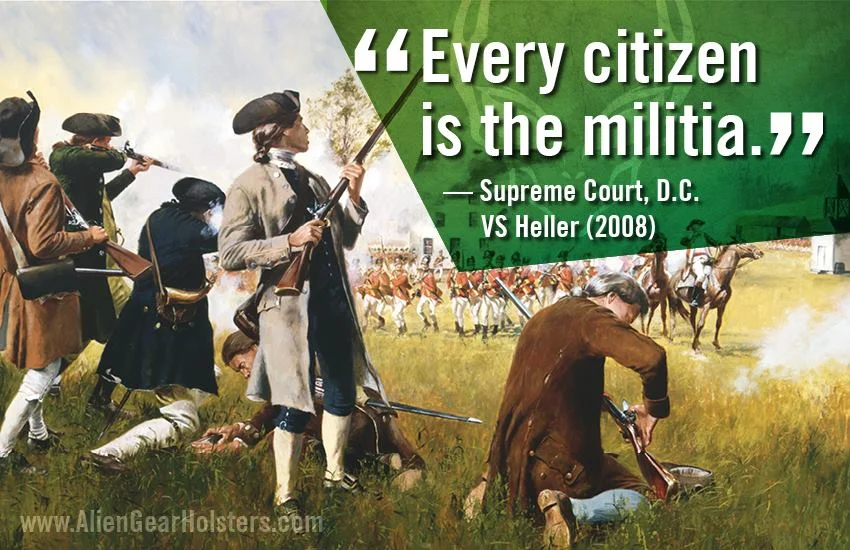
Right To Bear Arms
The right to keep and bear arms is codified in the Second Amendment to the United States Constitution, which reads: A well regulated militia, being necessary to the security of a free state, the right of the people to keep and bear arms, shall not be infringed.
Why Firearms Are Important To The American Family
NRA
The National Rifle Association is a non-profit organization dedicated to the protection of 2nd Amendment rights and education about firearms. They have oft been cited as a leader in firearms safety and courses designed to keep people operating safely and competently.
2nd Amendment
The 2nd Amendment is part of the US Bill of Rights and it stipulates the inherent, inalienable right for a citizen to bear arms and form militias. While the context has largely been extrapolated to include a litany of laws, regulations, and parlance – the core fundamental is it is the essential freedom given to citizens to maintain firearms on and about their person.
Gun Clubs
Gun clubs can be a great resource to any gun enthusiast. Between advice, training an just being around other like minded people, joining a gun club can be extremely beneficial.

